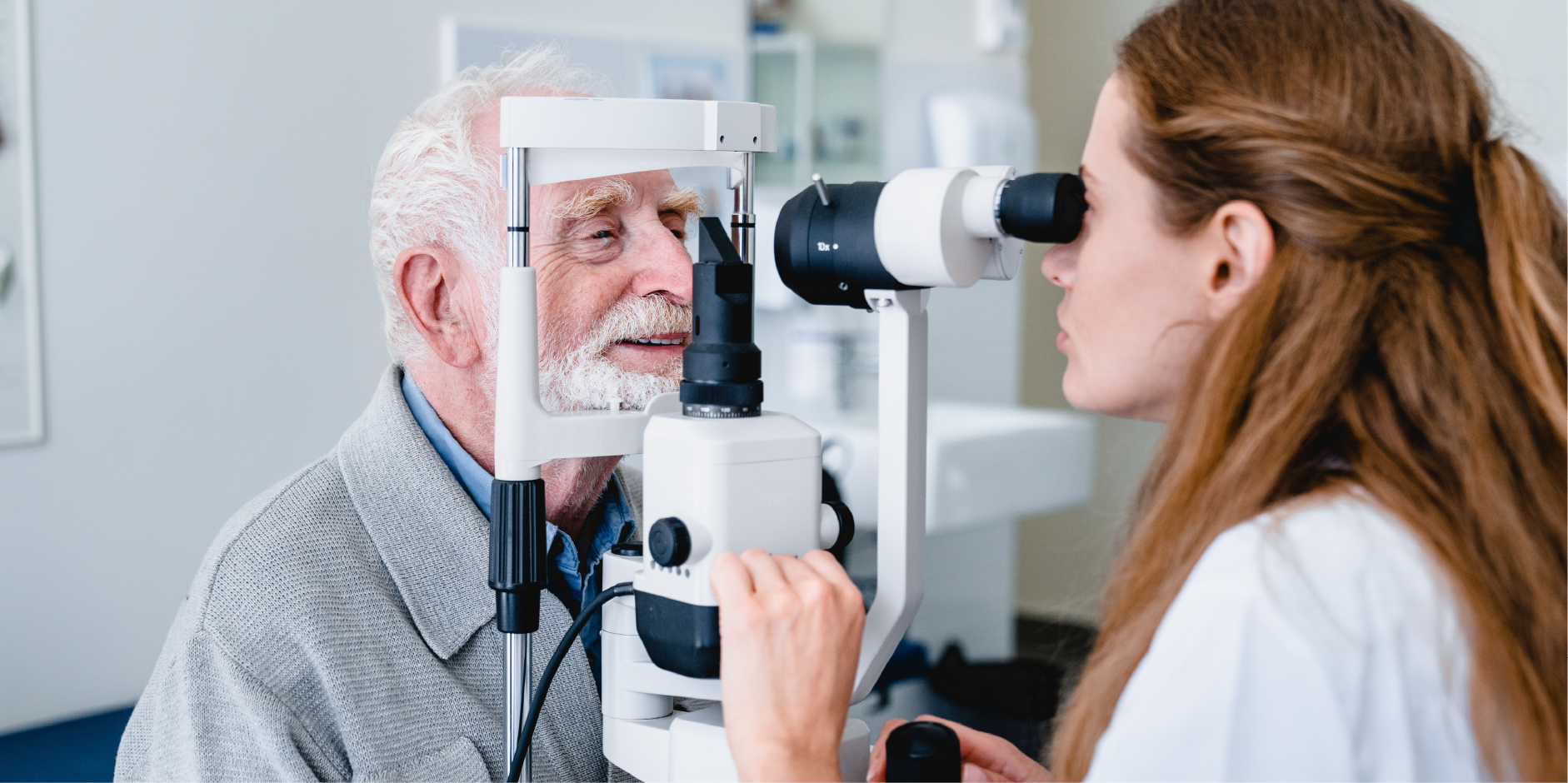Nội dung của trang này:
Nội dung của trang này:
Tiền sử bệnh
Most angle closures are asymptomatic until advanced. Specificity and
sensitivity of symptoms for identifying angle closure are very poor, although
symptoms such as redness, pain, halos, and blurring of vision may help identify
significant angle closure.
Past Ophthalmic History
The use of topical or systemic medications that may precipitate angle
narrowing (eg sulfonamides, Topiramate, phenothiazines, anticholinergic drugs,
tricyclic antidepressants, and steroids) should be asked. Any trauma, previous
eye treatment or laser surgery and allergies and adverse effects of drugs
should be noted.
Past Medical History
Exclude
past history of systemic conditions that may mimic glaucoma but are not
progressive (eg hemodynamic crises like postpartum hemorrhage, blood
transfusions, severe trauma, anterior ischemic optic neuropathy that may cause
optic pallor and cupping, or intracranial diseases). Systemic diseases (eg
asthma, chronic obstructive pulmonary disease [COPD], cardiac arrhythmias, hypotension/hypertension,
diabetes mellitus [DM], thyroid eye disease, pituitary tumors, previous head
injury, cerebrovascular accidents, dementia, or arthritis) should be noted. Inquire
regarding all medications taken, including drug allergies and factors that will
affect life expectancy.
Family History
Inquire about the type and course of disease in the family.
Socioeconomic Factors
Consider the patient’s compliance and financial capacity and the effects
of glaucoma on the patient’s life, work, and family.
Khám thực thể
Ophthalmological Examination
Refractive Status
Hyperopic eyes, especially in older phakic
patients, have narrower anterior chamber angles and are at higher risk of PACD.
Approximate the refractive status by measuring the eyeglass power to determine
the possibility of hyperopia or refracting the other eye. Retinoscopy should be
done to assess the actual refractive status.
 Primary Angle-Closure Glaucoma_Intial Assesement 1
Primary Angle-Closure Glaucoma_Intial Assesement 1Pupil
Examine the size, shape, and reactivity of the pupil and the presence of relative afferent pupillary defect. The pupil may be asymmetric or oval in the affected eye during or after an acute attack. The pupil may be poorly reactive or mid-dilated during an acute attack and tonic following an attack. An afferent pupillary defect may be present in chronic angle-closure or in asymmetric optic nerve damage.
Slit-lamp Biomicroscopy
In acute cases, look for conjunctival hyperemia and corneal swelling with or without microcytic edema. In recent attacks, check for anterior chamber inflammation, or iris abnormalities (eg diffuse or focal atrophy, posterior synechiae, abnormal pupillary function, irregular pupil shape, and a mid-dilated pupil). Other manifestations include central and peripheral ACD narrowing, lens changes such as cataract and glaukomflecken (patchy, localized, anterior subcapsular lens opacities), small corneal diameter, or corneal endothelial cell loss.
 Primary Angle-Closure Glaucoma_Intial Assesement 2
Primary Angle-Closure Glaucoma_Intial Assesement 2Intraocular Pressure (IOP) Measurement
The normal IOP is 10-21 mmHg and this tends to increase with age. The use a contact applanation method, typically Goldmann tonometry, should be done to determine the IOP. Perform IOP measurement prior to gonioscopy. Measure the central corneal thickness after the acute attack has resolved.
Gonioscopy
Gonioscopy is a standard technique for identifying ITC. This evaluates the angle anatomy, appositional closure, presence of PAS, and plateau iris configuration. This should be done in a dark room with a bright, short, and thinnest beam that does not pass through the pupil to avoid inducing pupillary constriction, which can widen the angle. Dark-room dynamic gonioscopy can determine the cause of plateau iris. Visualization of the angle may be impaired due to corneal edema in cases of acute angle-closure glaucoma (AACG). Topical glycerin can be used to clear the cornea to have a better view. Serial gonioscopy may also be a preferred therapy if without signs of chronic angle damage and glaucomatous optic neuropathy.
Pupil Dilation
Pupil dilatation may not be advisable in patients with ITC. However, an attempt should be made to evaluate the fundus and optic nerve head (ONH) using a direct ophthalmoscope or indirect ophthalmoscopy at the slit-lamp biomicroscope with a 78- or 90-diopter lens. This is also not recommended in PACD and PACS patients who are not having an acute attack until an iridotomy has been performed. Dilation can precipitate acute attacks. Evaluation of the ONH, retinal nerve fiber layer (RNFL), and VFs may be done after an adequate treatment of an acute attack.
Diagnosis or Diagnostic Criteria
Clinical Subtypes
Acute Angle-Closure Glaucoma (AACG)
Acute angle-closure glaucoma is a sudden and severe elevation of the
IOP that does not resolve spontaneously, resulting from total closure of the iridocorneal
angle. This is often brought about by sudden dilation of pupils from darkness,
medications, or sympathetic arousal.
The diagnostic criteria include increased IOP >21 mmHg with
occludable angle with:
- Any
2 of the following symptoms:
- History of blurring of vision and halos
- Nausea and/or vomiting
- Ocular and periocular pain
- And
any 3 of the following signs:
- Conjunctival injection
- Corneal epithelial edema
- Mid-dilated and reduced or unreactive pupil
- Shallow anterior chamber
Chronic Angle-Closure Glaucoma (CACG)
Chronic angle-closure glaucoma is characterized by permanent synechial
closure of the chamber angle confirmed by indentation gonioscopy. Eye
discomfort, visual disturbances, and transient “halos” may be experienced.
Signs of chronic angle-closure glaucoma are:
- Elevated IOP (>21 mmHg, depending on degree of ITC)
- Peripheral anterior synechiae of varying degrees
- ONH damage pattern consistent with glaucoma
- VF defects
Intermittent Angle-Closure Glaucoma (IACG)
Intermittent angle-closure glaucoma is sometimes referred to as
subacute angle-closure glaucoma. This is similar to AACG but with symptoms
occurring in intermittent, milder attacks, and symptoms are spontaneously relieved
after ≥1 hour.
Signs of intermittent angle-closure glaucoma are:
- May resemble AACG but in a milder form
- May vary according to degree of ITC of chamber angle
- Atrophy of optic disc rim with afferent pupillary defect may be seen
Screening
Screening Patients for Glaucoma
No single screening test is sufficient to determine patients with and
without glaucoma. It has been estimated that half of glaucoma cases worldwide are
caused by PACD. Optic nerve damage occurs in approximately 75% of patients with
PACG in Asia.
Opportunistic Glaucoma Screening
Opportunistic glaucoma screening relies on the detection of glaucoma in
patients who present for other reasons. This involves comprehensive
ophthalmologic examination among patients >35 years old who seek ophthalmic attention
for any reason. This should be considered in patients with risk factors,
especially patients with diabetes or a family history of glaucoma.
 Primary Angle-Closure Glaucoma_Intial Assesement 3
Primary Angle-Closure Glaucoma_Intial Assesement 3Universal Glaucoma Screening
Universal glaucoma screening is a strategy wherein healthcare professionals seek out patients in the general population. This is not feasible in developing countries since there is not enough infrastructure available (eg availability of expertise, time, and instrumentation) required to confirm diagnosis among patients with positive results.
For non-ophthalmologic professionals, screening consists of a comprehensive assessment of risk factors, IOP measurement, and optic disc examination. If slit-lamp examination is available, assess limbal ACD. Screening in an ophthalmologist’s clinic consists of a comprehensive clinical examination, which includes slit-lamp examination, IOP measurement, dilated optic disc examination, and gonioscopy. Optic disc examination and perimetry will only detect PACD in the presence of a damaged optic disc or visual field (VF). Tonometry will only detect PACD if IOP is elevated.
Currently, periodic routine comprehensive eye examination is the optimal method for screening glaucoma. Opportunistic screening is recommended in the absence of an ideal screening method. Diagnosis is based on history and comprehensive ophthalmological examination.
